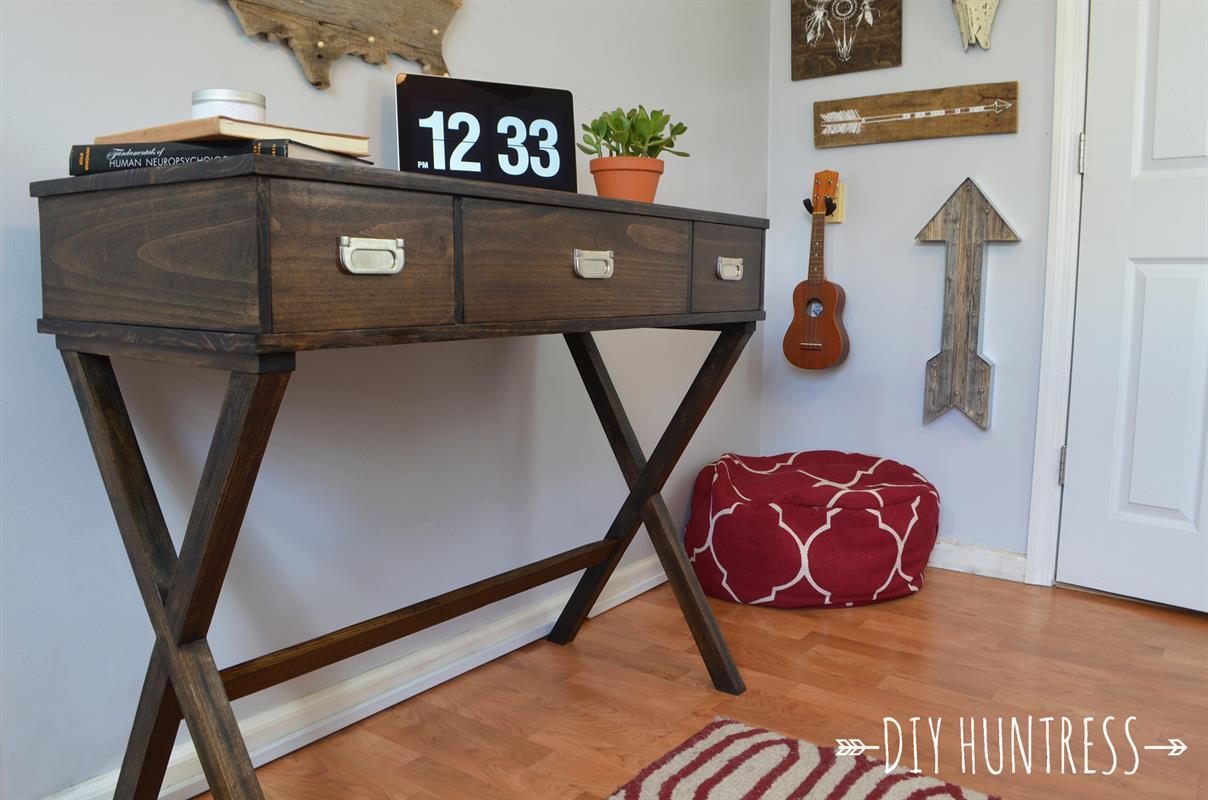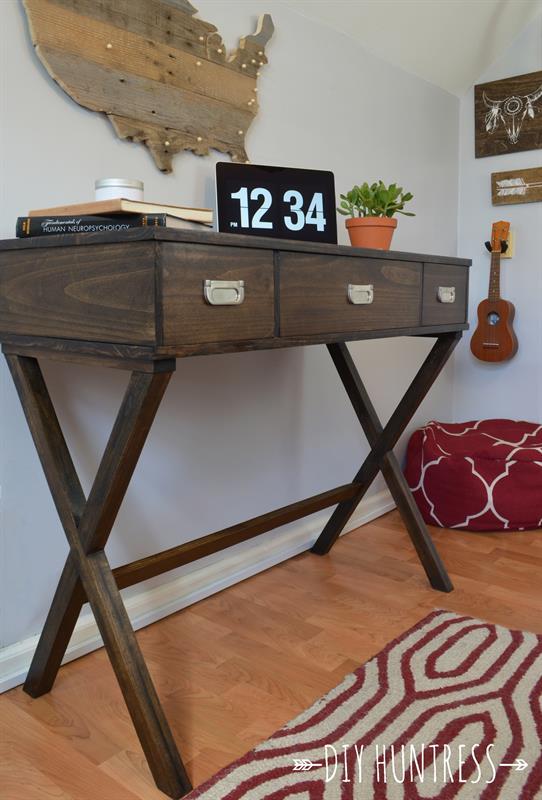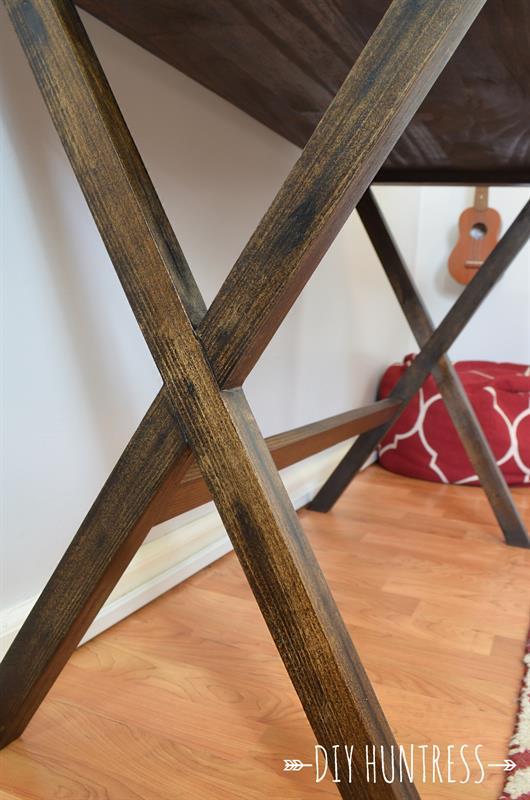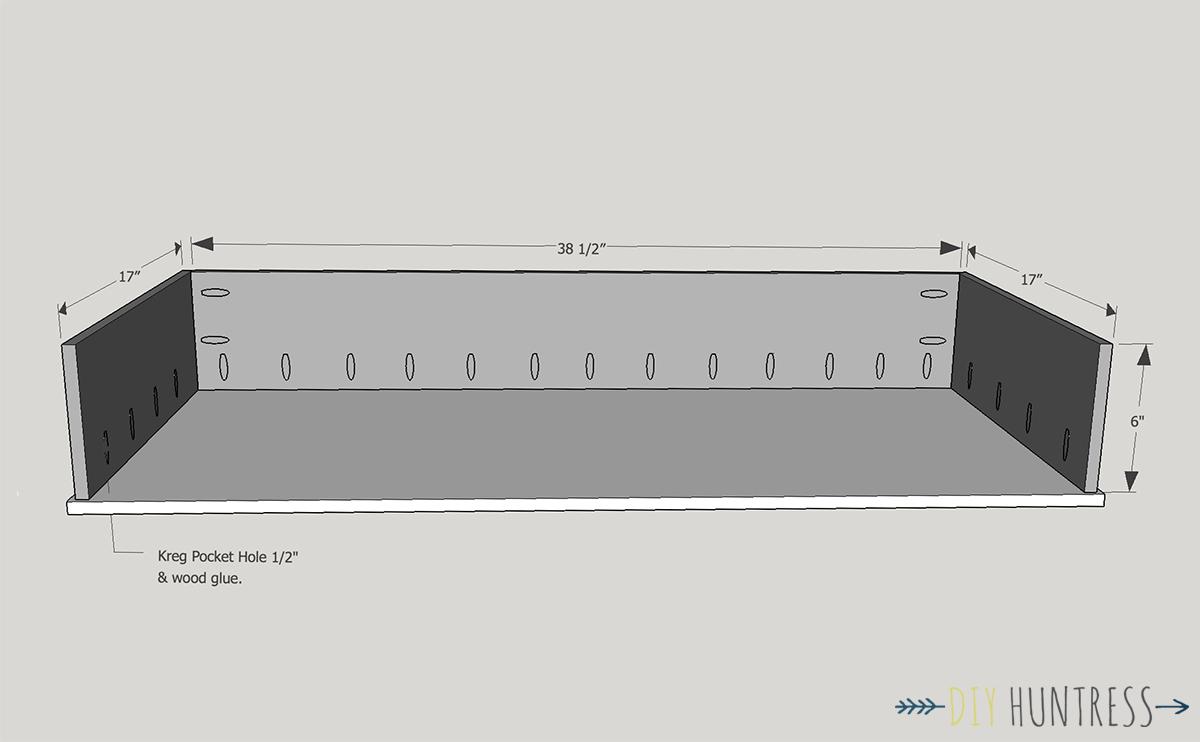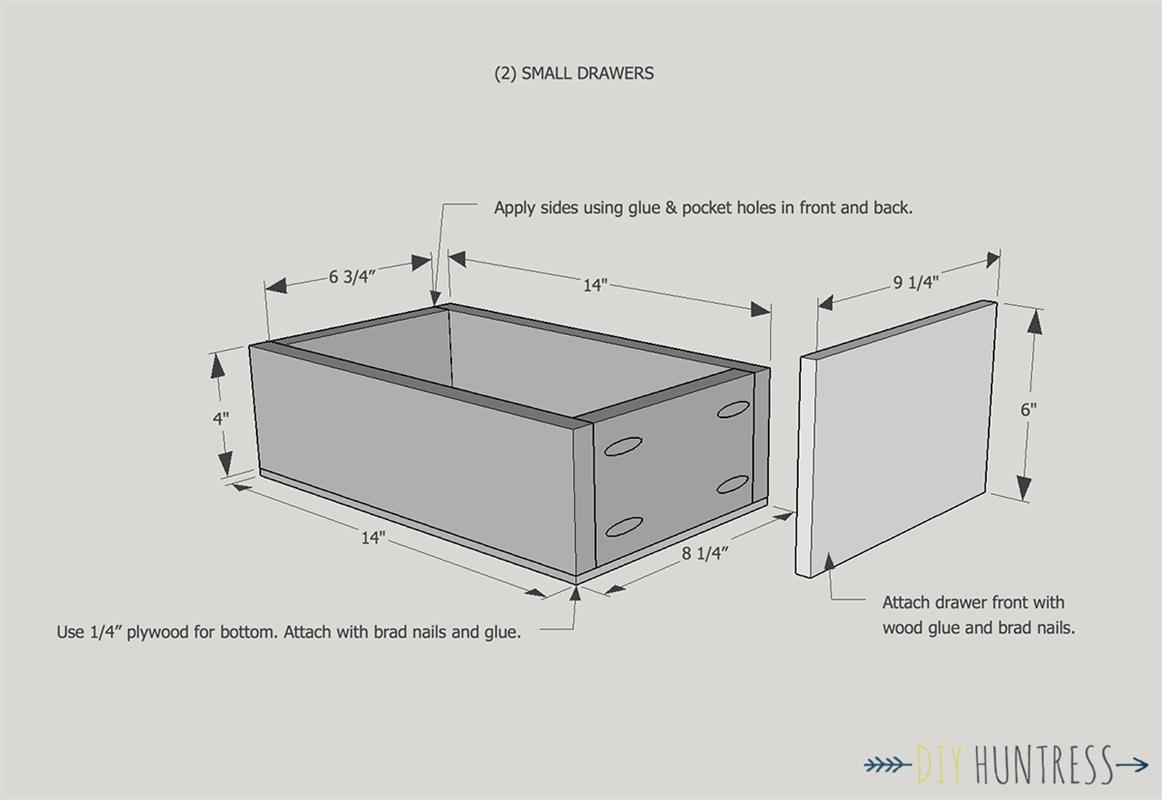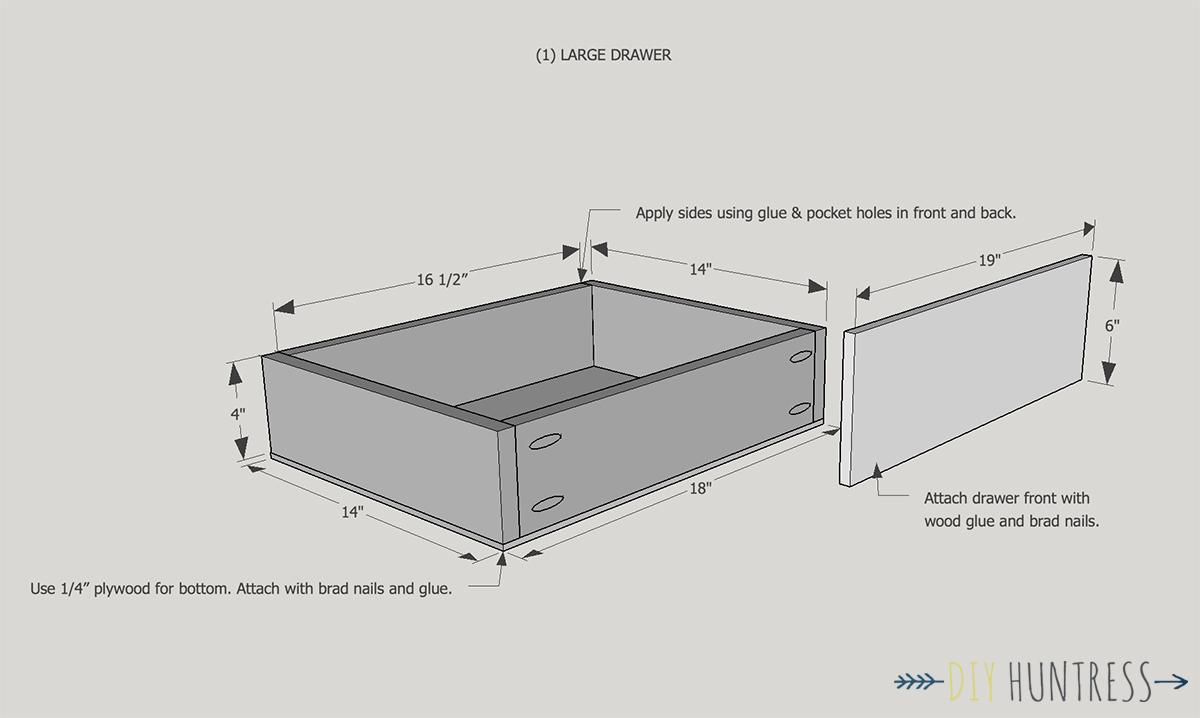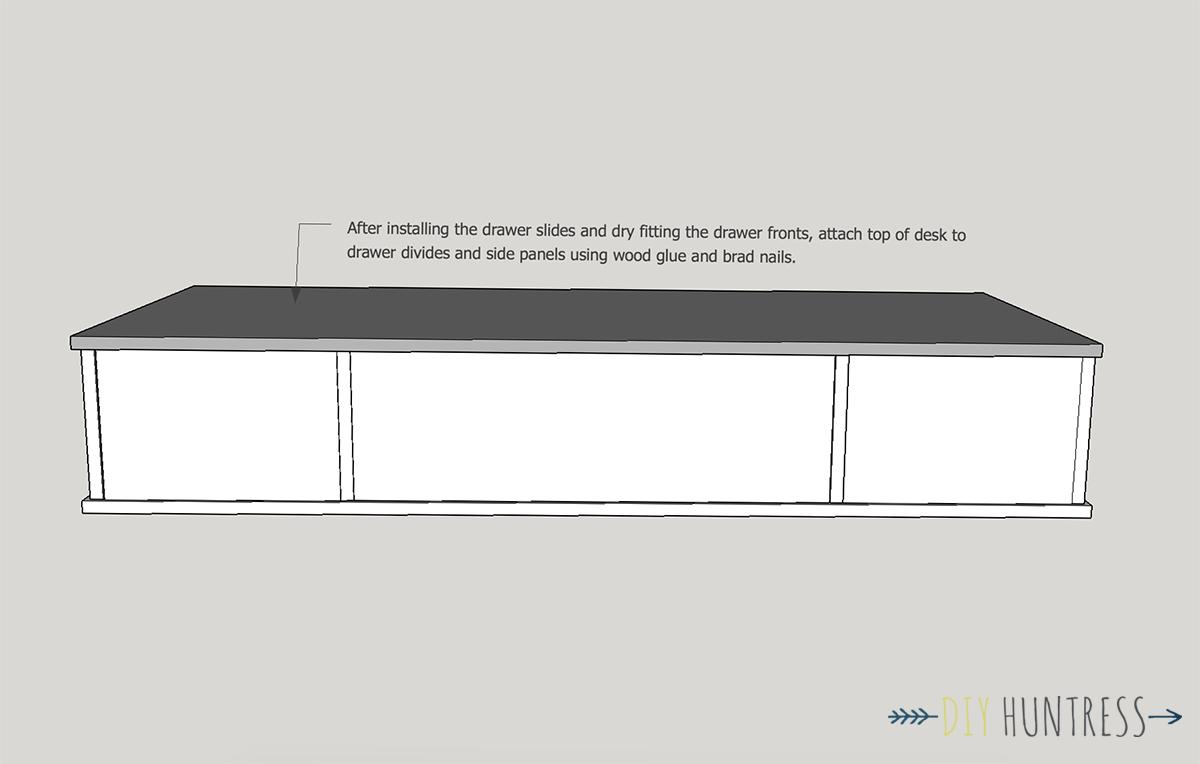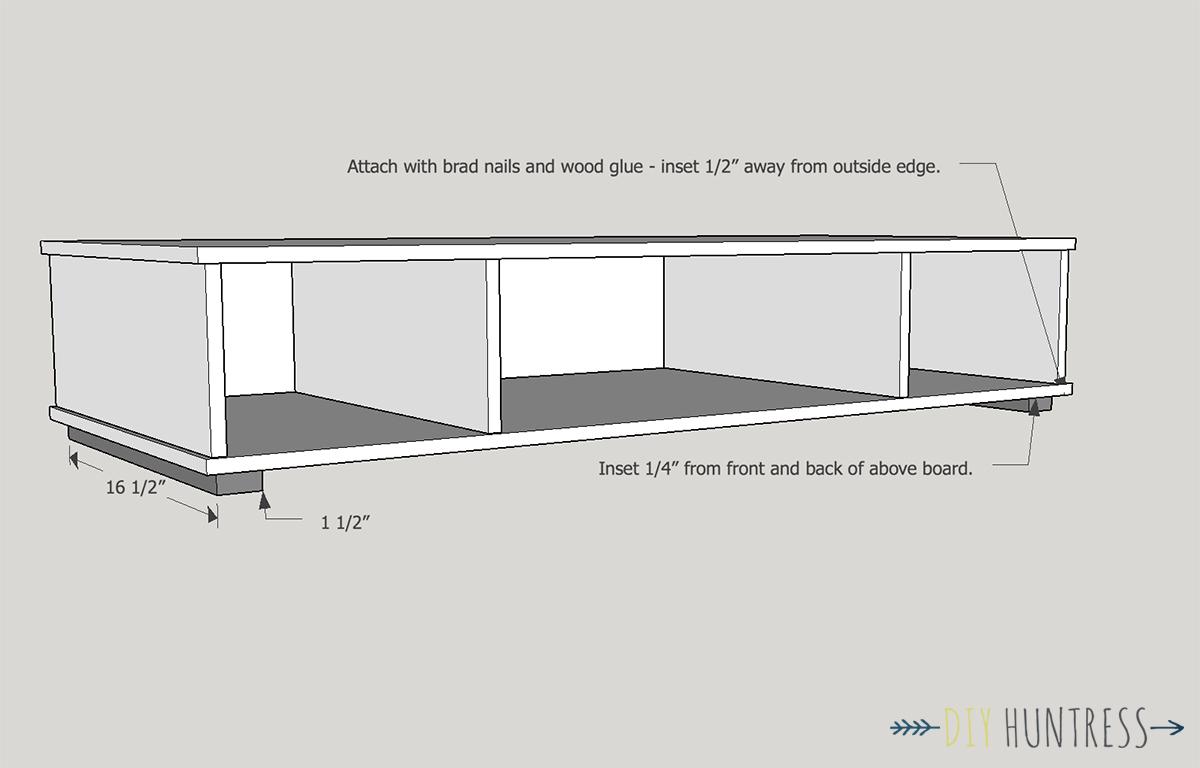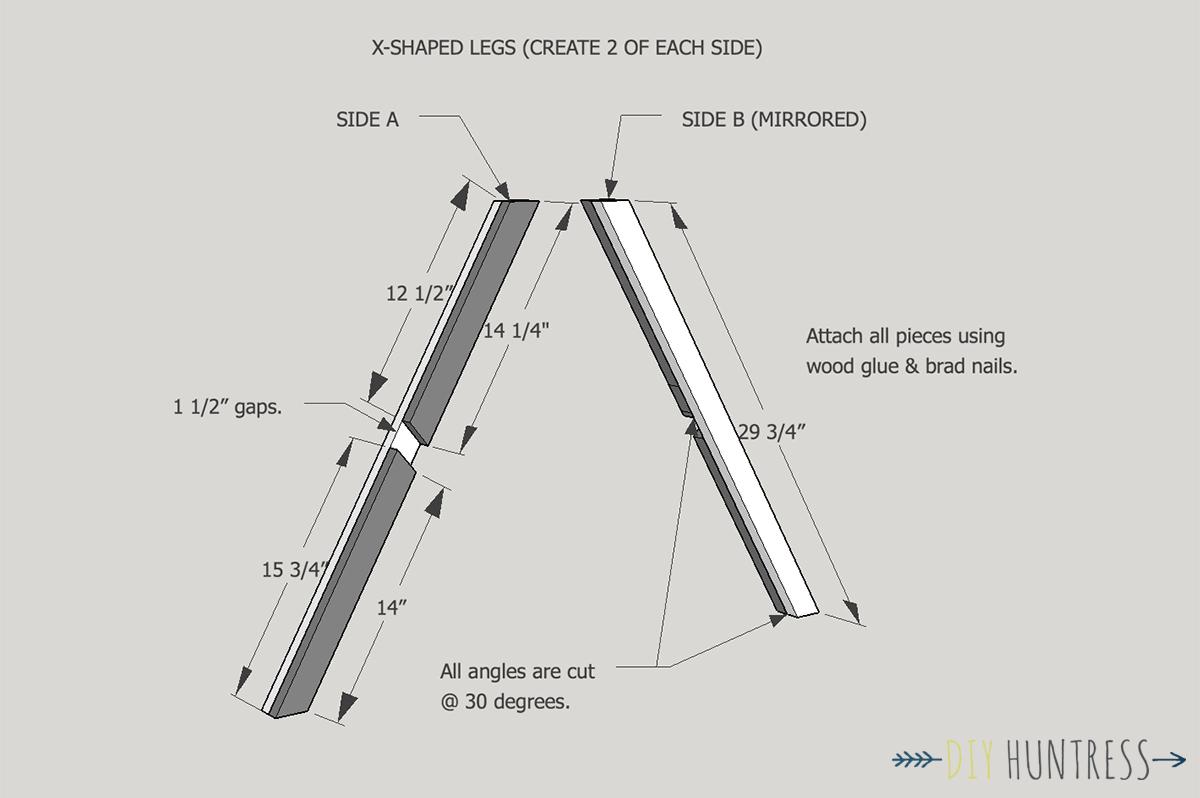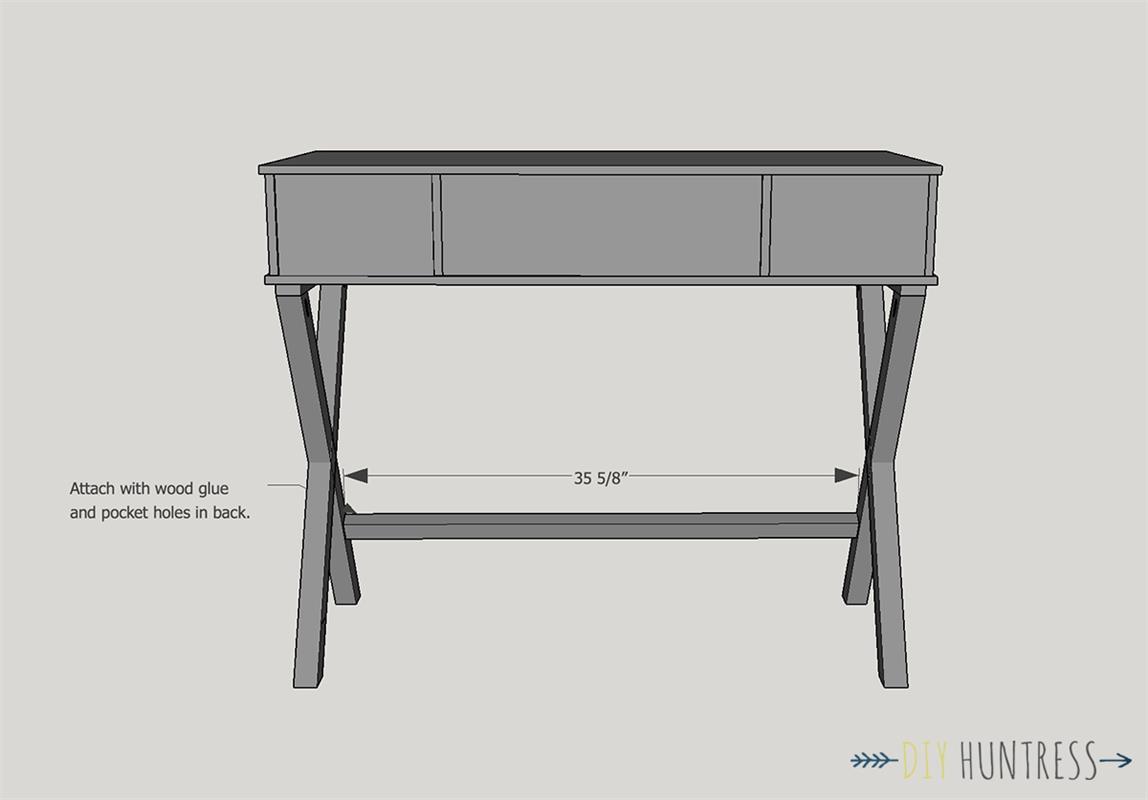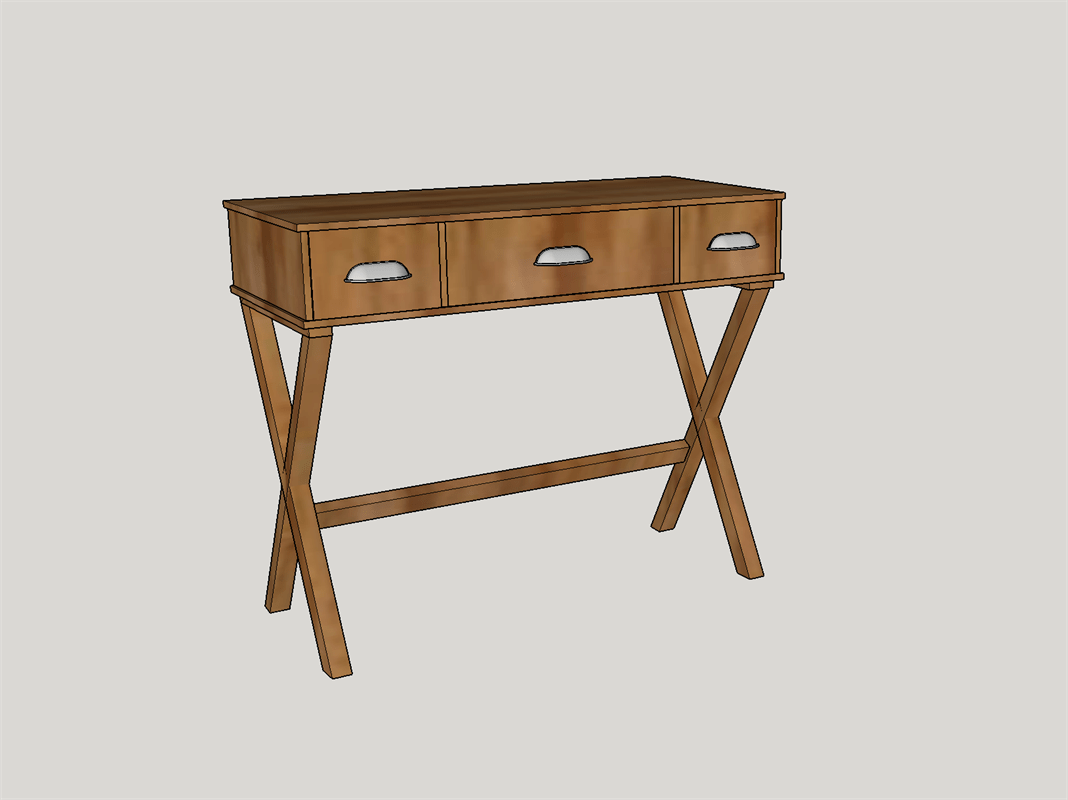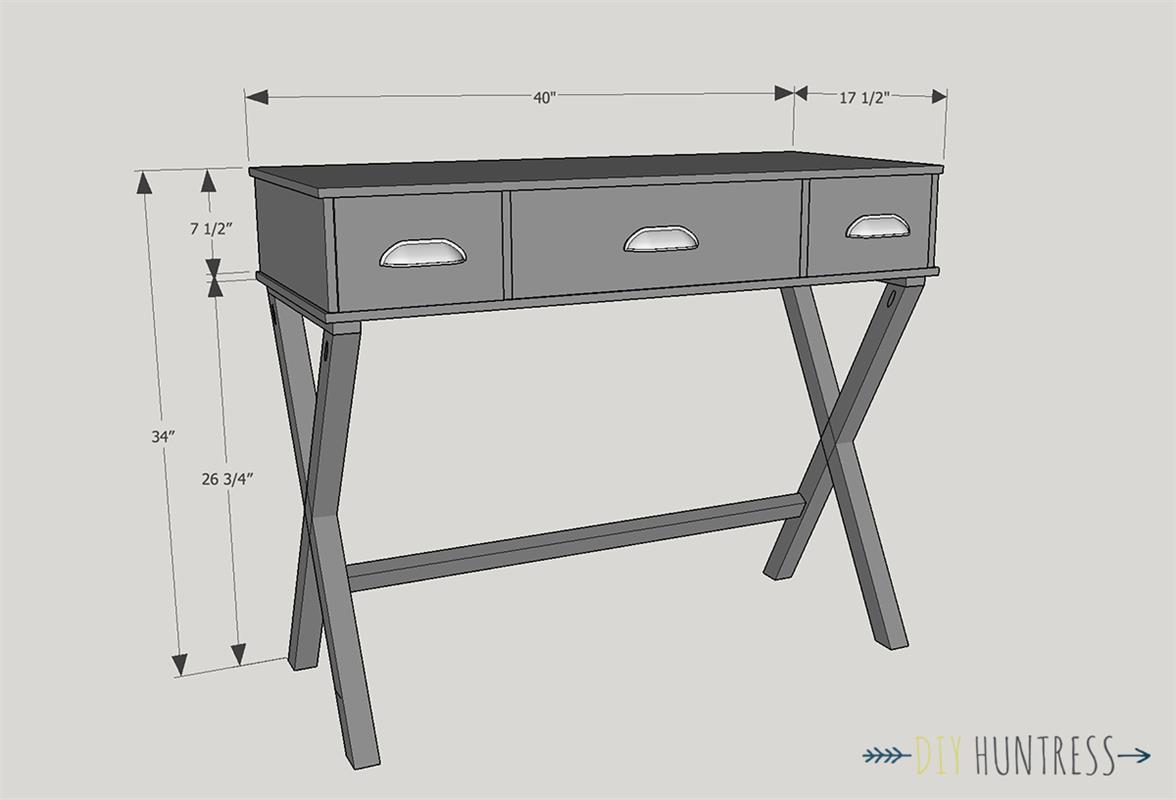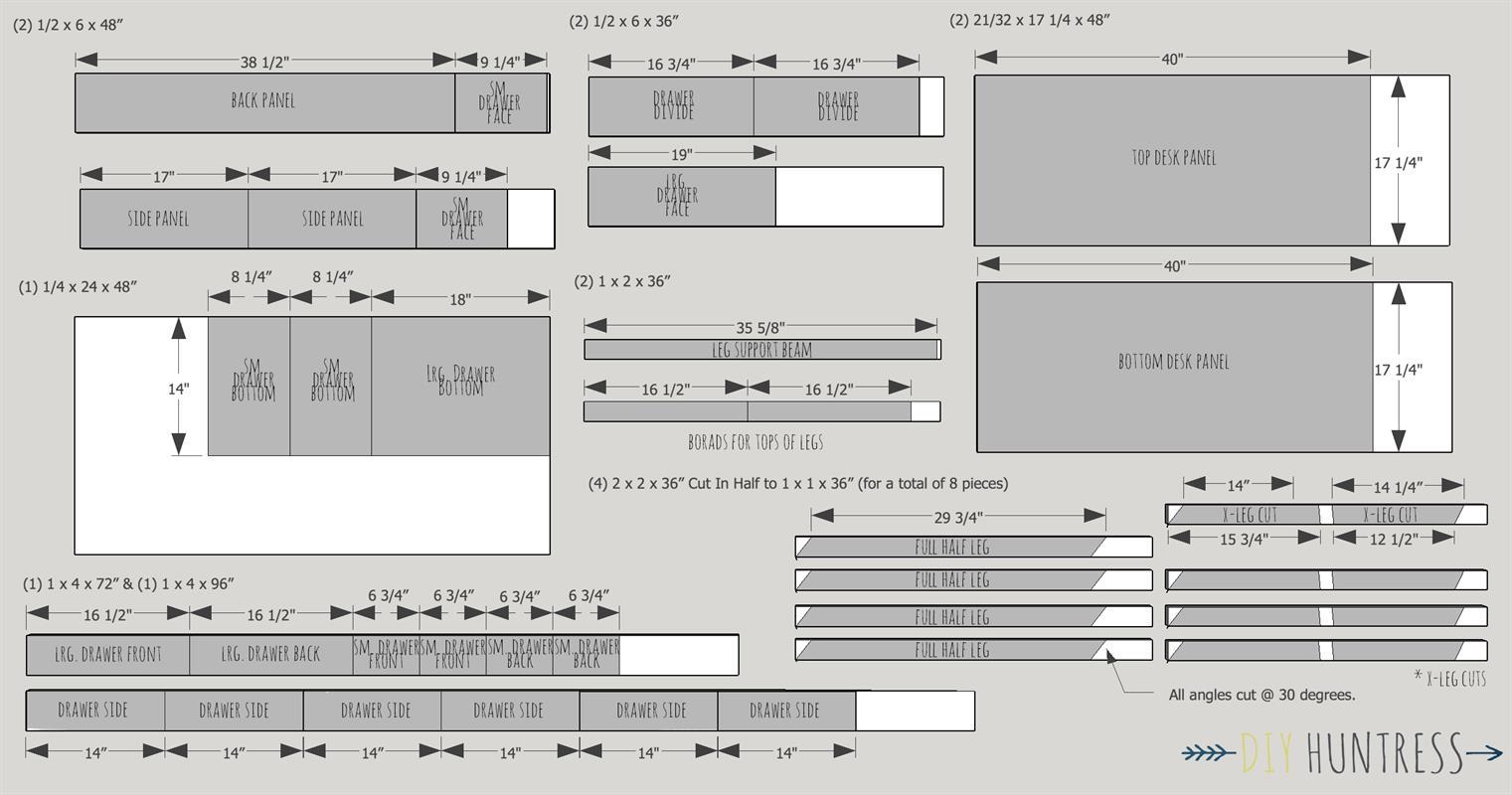DIY X-Leg Desk With Drawers
By DIY HuntressThis modern and sleek desk has three drawers for easy storage and attractive x-legs. Working from home has never looked so good.
Directions
-
Attach Side and Back Panels
Attach the side and back pieces to the large bottom desk panel using 1/2" pocket holes and 1" Kreg pocket hole screws and wood glue. If you choose to use thicker material, you can follow the instructions in your manual to find the appropriate screw and pocket hole depth. Make sure that all pieces are 1/4" inset from the outsides of the desk panel.
-
Attach Drawer Dividers
Attach your drawer dividers using 1/2" pocket holes and 1" pocket hole screws and wood glue. Make sure to measure the smaller drawers at 9 1/4". Make sure the divides are square to avoid mistakes with drawer measurements later.
-
Build Your Small Drawers
Before attaching the top of the desk, build your smaller drawers. Use your pocket hole jig, 1 1/4"screws, and wood glue to attach all four sides of the drawer (make your pocket holes in the front and back pieces - the back of the desk and the drawer front will hide them later). Attach the bottom piece of plywood with brad nails and wood glue. The drawer faces can be attached with brad nails, or screws, and wood glue.
Make sure to adjust any measurements if your drawer slides call for it (i.e., my drawer slides called for a 1/2" gap on both sides of the drawer for installation). Install the slides so that there is also a 1/2" space for the drawer face to fit flush with the dividers.
-
Build Your Large Drawer
Re-measure your large drawer opening and make sure the measurements are still square and correct. Once correct, build your larger drawer.
Make sure to adjust any measurements if your drawer slides call for it (i.e., my drawer slides called for a 1/2" gap on both sides of the drawer for installation). Install the slides so that there is also a 1/2" space for the drawer face to fit flush with the dividers.
-
Attach Top & Dry Fit Drawers
At this point, your drawer slides should be installed and the drawers should have a dry fit. Due to the imperfect nature of the wood found in hardware stores, sand down your drawer fronts rather than cutting them (this is why the measurements I provided ask you to cut the drawers a little larger than need be). By sanding and/or cutting the pieces to fit as you go, you can avoid any large gaps between the drawer face and the drawer divides.
Once fit, attach the top of the desk to the skeleton using brad nails and glue.
-
Add Your Top Leg Boards
Use brad nails and wood glue to attach the top boards for the legs. These should be inset at 1/2" from the side edges of the bottom board and 1/4" from the front and back.
-
Build Your Legs
This is where this project gets tricky. One x-leg is made from 6 separate pieces. It helps to have some extra wood on hand for a dry fit before committing.
To make the legs, FIRST rip your 2"x2" pieces to 1"x1" (actually 3/4"x3/4"). Once in half, cut your pieces to the dimensions in the diagram. All mitered cuts are made at 30 degrees.
You may have to play around with the measurements, depending on how high you want your desk to be.
-
Assemble Your Legs
Connect your legs by matching up the notches. Attach with wood glue and brad nails.
-
Install Legs
Install your legs using 2" pocket holes and 2 1/2" screws on each side of the boards (4 per leg) and glue. Use wood putty to cover the holes - they can be stained or painted over later.
-
Attach Leg Support Beam
Attach the final piece of the puzzle with 1 1/2" pocket hole screws and wood glue. Use a level to make sure it is straight.
-
Attach Hardware & Finish
Before finishing, attach the drawer pulls first to make sure everything is in working order. You may need to sand the sides of the drawer faces down if there is rubbing.
Once the drawers fit, sand, then stain, and finish your piece with top coat.
-
Check Out The Plans
Check out the dimensions of the desk to make sure it fits in your space.
-
Make Your Cuts
Follow the cut diagram and cut pieces for easier assembly. You may even want to hop on over to step 9 and create a dry run of the x-legs before starting.



